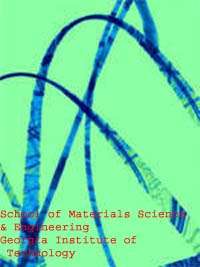Zinc Oxide Nanostructures: Growth, Properties and Applications

An article of the same name recently published by Dr. Zhong Lin Wang in the Journal of Physics: Condensed Matter reviews various nanostructures of ZnO grown by the solid–vapour phase technique and their corresponding growth mechanisms. He also demonstrates the application of ZnO nanobelts as nanosensors, nanocantilevers, field effect transistors and nanoresonators.
Zinc oxide is a unique material that exhibits semiconducting and piezoelectric dual properties.
ZnO has a long history of usage for pigments and protective coatings on metals. The electrical, optoelectronic and photochemical properties of undoped ZnO has resulted in use for solar cells, transparent electrodes and blue/UV light emitting devices. In the past decade, numerous studies have been made on both production and application of one-dimensional ZnO.
ZnO nanomaterials are promising candidates for nanoelectronic and photonics. Compared with other semiconductor materials, ZnO has higher exciton binding engery(60 meV), is more resistant to radiation, and is multifunctional with uses in the areas as a piezoelectric, ferroelectric and ferromagnetic. ZnO-based semiconductor and nanowire devices are also promising for the integration on a single chip. So far, the various applications of ZnO nano materials such as biosensors, UV detectors and FED are under way.
Dr. Zhong Lin Wang, director of Georgia Tech's Center for Nanoscience and Nanotechnology, Atlanta reports that using a solid–vapour phase thermal sublimation technique, nanocombs, nanorings, nanohelixes/nanosprings, nanobelts, nanowires and nanocages of ZnO have been synthesized under specific growth conditions. He also summarizes the various growth morphologies and proposes their growth processes.
These unique nanostructures unambiguously demonstrate that ZnO probably has the richest family of nanostructures among all materials, both in structures and in properties. The nanostructures could have novel applications in optoelectronics, sensors, transducers and biomedical sciences.
The nanobelts and relevant nanostructures are a unique group that is likely to have important applications in nanosize electronic, optical, sensor and optoelectronic devices.
The latest breakthroughs is the success of first piezoelectric nanobelts and nanorings for applications as sensors, transducers and actuators in micro- and nano-electromechanical systems, which was published in Science this year (Science, 303 (2004) 1348 ).
Find more about Zhong Lin Wang’s group at www.nanoscience.gatech.edu/zlwang/index.htm
The article J. Phys.: Condens. Matter 16 (2004) R829–R858 can be found here: www.iop.org/EJ/abstract/0953-8984/16/25/R01
















